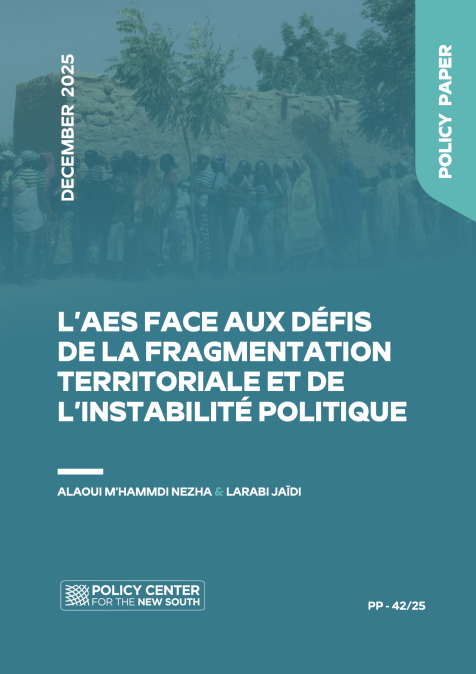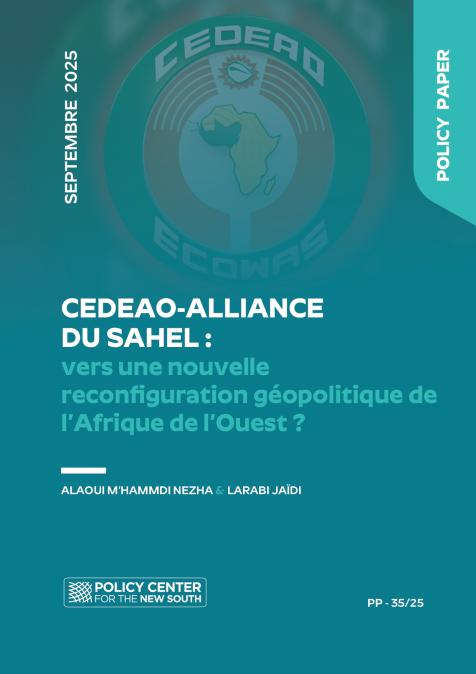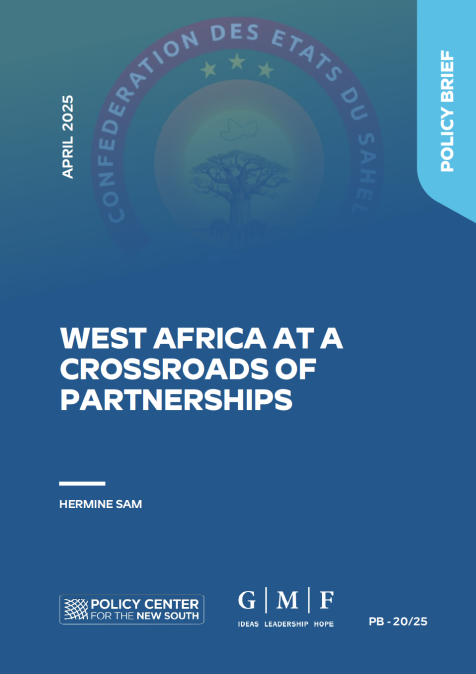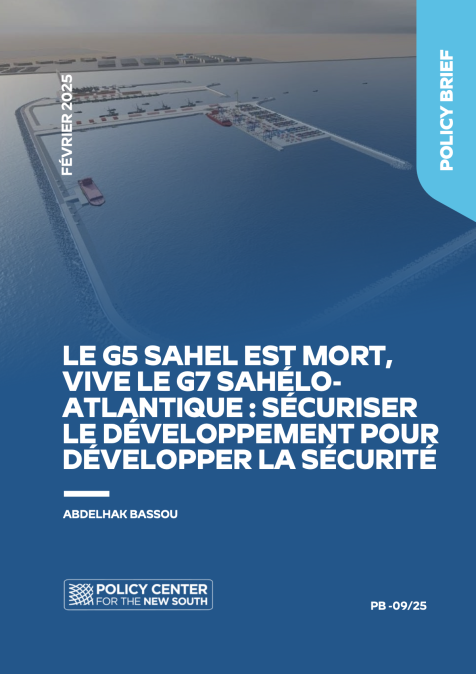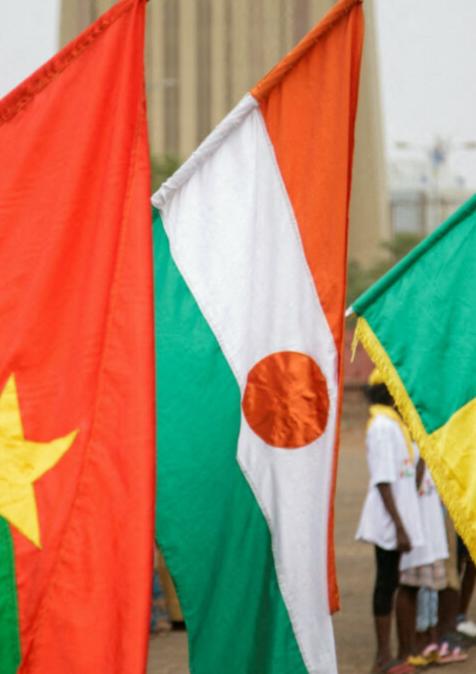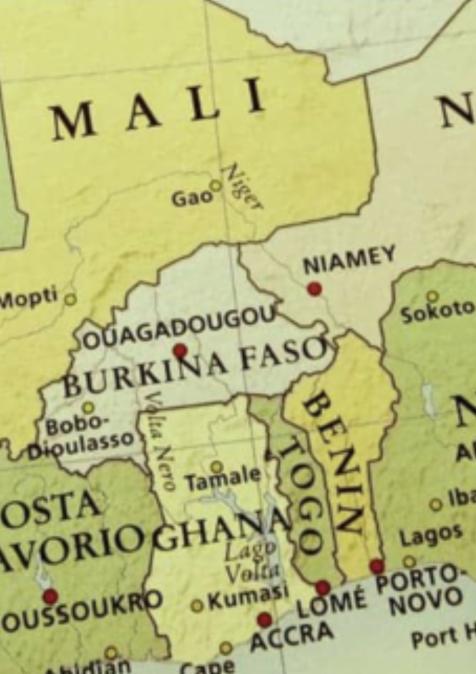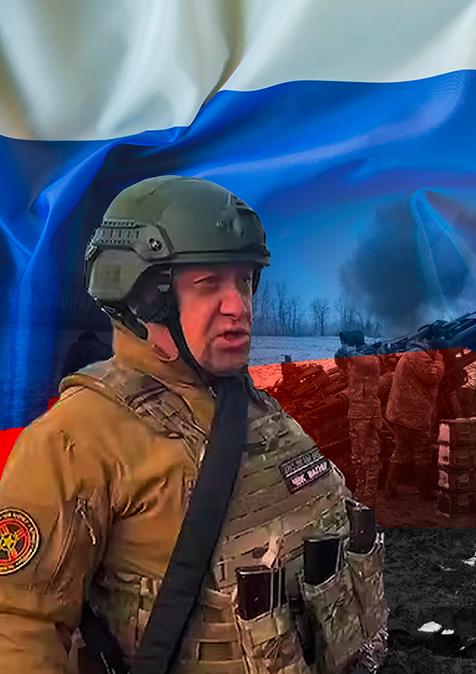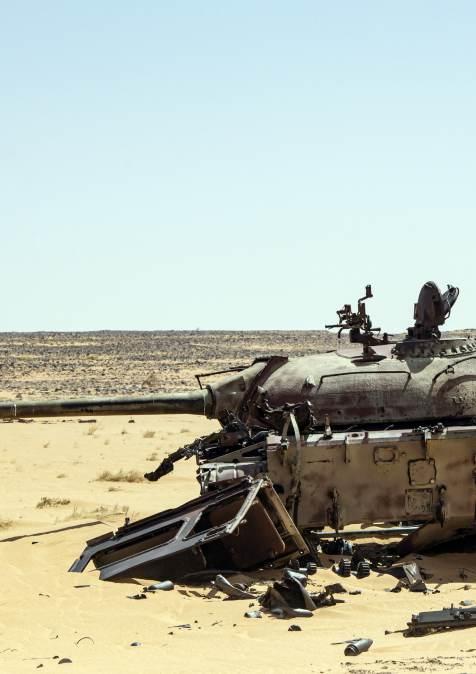Publications /
Opinion
In July 2021, the United Nations issued a condemnation against the “dramatic rise” in attacks against “descent-based slaves” in Mali, calling the violence “unacceptable”[i]. The statement was in response to a tragic episode in the eastern region of Kayes, where landowners using machetes and rifles assaulted a group of indentured laborers to prevent them working on the landowners’ fields. Tomoya Okobata, the UN's Special Rapporteur on Contemporary Forms of Slavery, said these “assaults are incompatible with an inclusive society and we condemn them in the strongest terms”. So far this year dozens of individuals of slave-descent have been attacked, wounded and displaced. The United Nations statement also said, “The dramatic increases in attacks this year shows the government's gross failure to protect its people, particularly those who already suffer most from discrimination and violence”[ii]. The international body issued a similar statement in September 2020, following the murder of four anti-slavery activists in the village of Djandjamé in western Mali[iii], decrying the “barbaric and criminal acts”, demanding an investigation, and calling on Malian state officials to criminalize slavery once and for all[iv].
These tragic events have drawn attention to the enduring forms of servitude, bondage, and institutionalized violence in the Sahel region and beyond. French colonial administrators formally abolished the slave trade in Mali in 1905, but they often ignored such practices for fear that their eradication would undermine local economies and weaken the colonial regime’s grip on labor and tax collection. Thus, to this today, the descendants of former slaves in Mali are stigmatized for their slave origins. In 2012, Mali passed a law criminalizing human trafficking. In 2016, Bamako ratified the International Labor Organization’s 2014 Protocol on Forced Labor, and drafted a law to raise the minimum age for work to fifteen[v]. But despite pressure from local activists and international organizations, the Malian government has yet to pass a law outlawing slavery. According to anti-slavery activists, Malian state officials delay and evade the issue by claiming such victims are not ‘slaves’, but rather participants in ‘traditional’ practices[vi].
The situation in Mali has drawn attention to other regions in Africa where servitude, colonial legacies, and economic oppression intersect, yet how should analysts understand economic domination based on human difference (be it race, ethnicity, class, gender, or caste)? In recent years, it has become common to deploy a racial framing to understand inter-group conflict and economic domination. But does the variable of race provide greater analytical traction for explaining identity-based conflict, compared to a framework that centers on ethnicity, class, caste, or gender? The debate over how to designate difference is ongoing, with some scholars rejecting the expansion of the concept to race to refer to people beyond those of sub-Saharan descent, arguing that this stretches ‘race’ to the point of imprecision, while others contend that it is the current usage of Blackness that treats black like it is an “historically coherent” ethnicity[vii]. As will be demonstrated below, how labeling (and identification) is done, whether by scholars, activists, or partisans in a conflict, is an intensely political act that defines categories and sets boundaries[viii]. When regimes impose racial or ethnic categories—or criminalize racial or ethnic identification as the Rwandan government did recently—it has dire consequences for activists on the ground.
The legacies of slavery and indentured servitude overlap with the after-effects of colonialism across the African continent. In 1905, for instance, the French colonial governor Ernest Roume outlawed slavery and the slave trade, by decree, throughout French West Africa. In French-controlled territories, colonial officials officially abolished slavery (including in Morocco in 1925) but tolerated existing slavery practices and did not emancipate slaves. Recent research shows how in Morocco’s southeastern oases, the French would divide the Berber/Amazigh and Haratin/Iqablin groups along racial lines, as ‘white’ (autochthon) natives and ‘black’ (allochtoon) non-natives respectively, while not disturbing the former’s indentured exploitation of the latter. Reformist policies since independence and the increased migration of the Haratin have re-ordered social relations, but tensions still exist between the Imazighen and Haratin, often surfacing around the distribution of economic and political resources during electoral campaigns[ix]. There is a similar situation in Mauritania with the Haratin-Beidane dynamic and the labor hierarchy, which in turn parallels the situation in central Chad with the Arabic-speaking Yalnas.
Scholars concede that the concept of ‘post-slavery’ is difficult to define, since the colonial or postcolonial outlawing of enslavement and slave trafficking did not immediately bring about the emancipation of ex-slaves and their descendants. As the cases of Chad and Benin demonstrate, ‘post-slavery’ is the process that follows legal abolition and that can be demarcated according to various criteria, such as the gradual accession of ex-slaves to property rights or full citizenship. As Bendetta Rossi argued in her work on slave descent in Niger and northern Nigeria, scholars must study the relationship between labels and practice, to understand why some people hold on to certain labels while others drop them: “When do slave descendants themselves reclaim their slave origins? When do politicians mobilize collective legacies of slavery as part of their political strategies? And what are the consequences of framing social, political, and economic relations in terms of slave and free descent?”[1] After slavery was abolished in Chad, the Yalnas, a formerly indentured or enslaved community located in the “former slave reservoir” in the Guéra region of Chad, were recognized by French colonial administrators in the 1910s as a distinct group, given land and two chef de cantons as political representatives[x]. As Marielle Debos showed in her book, Living by the Gun in Chad: Combatants, Impunity and State Formation, when Chadean strongman Hissène Habré came to power in 1982 and began operating as a de-facto warlord, he was ruthless against the Arabic-speaking northern tribes he deemed hostile, torching their oases and eliminating rival Muslim clans[xi]. Habré’s enforcers would inflict mass violence on the predominantly Christian and animist south as well, causing tends to thousands to flee. In the 1990s, decades after independence, and in response to increasing desertification and new land policies (adopted by Idriss Déby who succeeded Habré in 1990), the dominant Hadjiray began disputing the Yalnas’ right to land as a colonial fabrication. Highlighting their alleged slave origins, the Hadjiray began calling them ‘Yalnas’, a stigmatizing label that the subordinate group has been trying to shed[xii].
The use of slave-descent, genealogy, and historical appellations as a political tool to exclude groups from citizenship rights is a phenomenon one sees across Africa from Mali to Benin to Madagascar. In Benin, the Gando community, a group of slave descent, would achieve emancipation in part through a reconstruction of its collective identity. Once seen as an offshoot of the Baatombu people, they remade themselves as a new ethnic group named Gando—de-emphasizing their slave origins, but retaining their connection to the Fulbe, all while claiming a Beninois national identity[xiii]. This process of identity reconstruction would prove empowering, as in the early 2000s, the Gando began mobilizing electorally, and winning municipal seats in the local elections of 2003 and 2008. Ethnic self-identification in this case proved empowering[xiv]. The Gando’s adoption of a new name draws attention to the question of ‘endonyms’ and ‘exonyms’, that is internal names for a population versus names imposed from outside. Recent work on the legacy of slavery in Mauritania, for example, has shown informants saying that the label haratin was not a self-identifier, but rather a designation imposed by Western observers[xv]. Struggles around self-identification and mobilization also play out in the Horn of Africa and across the Red Sea in Yemen. A September 2021 study contrasts the different strategies of self-identification adopted by black Yemeni activists. The Movement of Free Black People, founded in 2005, for instance, casts its struggle in explicitly racial terms. The muhamasheen-led organization, Ahfad Bilal (Grandchildren of Bilal), on the other hand, makes a genealogical case, claiming a link to Bilal, a former slave of Abysinnian origin who grew close to the Prophet Muhammad. Akhdam Allah (Servants of God) emphasize the community’s economic exclusion and religious piety[xvi].
In recent years, caste has made a comeback as an analytical tool, being used to understand the subjugation of the slave-descent Bantu Jareer in southern Somalia, or the jiyaado of Upper Casamance region of southern Senegal[xvii]. Some of the most original work around caste and servitude in Africa has looked at the situation of the formerly enslaved Betsileo people on Madagascar. As Denis Regnier has shown, more than a century after French colonial administrators abolished slavery on the island (in 1896), “slavery is still a very salient and sensitive issue in Madagascar”[xviii]. People of alleged slave descent in the southern highlands, like the Betsileo, for example, are often referred to as olo maloto (unclean people); and Malagasi people of free descent, who form the vast majority of the population, are strongly discouraged from marrying people deemed ‘polluted’ or of impure descent. Research on social and tribal hierarchies in Yemen shows how caste and labeling can operate. As Sabria al-Thawr of Sana’a University has shown, the ongoing war in Yemen has adversely affected the country’s marginalized groups—the muhamasheen (black Yemenis), abid (former slaves) and akhdam (servant group), especially as warlords are prone to deploy a particular label to delegitimize an adversary or mobilize a group to the frontline[xix].
In Sudan, a lively debate around national identity, citizenship and racial exclusion has been raging since the uprising that resulted in the removal of al-Bashir in April 2019. One scholar has observed poignantly that in 2019, Sudanese protesters hoisted the Sudanese independence flag with its pan-African colors (the blue, yellow, and green tricolor, resembling the flags of Rwanda and Tanzania). This was a way to draw attention to the marginalized populations from peripheral regions and neighborhoods that, for reasons of language, lineage, or phenotype, are denied basic rights and state services. It was also a way to “highlight Sudan’s racially fraught relationship to South Sudan and to the wider Arabic- speaking world”[xx]. When Gaafar Nimeiry came to power in a 1969, he replaced the independence flag a year later with the black, white, and red tricolor, colors usually associated with Arab nationalism and linking Sudan to Egypt, Syria, Iraq, and other Arab republics. Moreover, as Zachary Mondesire wrote, the hoisting of the independence flag by protesters in Sudan resonated with South Sudan’s decision to adopt a flag that is almost identical to Kenya’s black, red, and green tricolor. This was an allusion to Kenya’s role in the lead-up to the Comprehensive Peace Agreement (CPA) in 2005, but also an attempt to position South Sudan outside the Arab world.
Exploitative economic practices and indentured servitude in Africa—both contemporary and historic—will continue to generate protest movements that will reverberate at the local and international levels.
The opinions expressed in this article belong to the author.
[1] https://www.jstor.org/stable/44723362
[i] https://news.un.org/en/story/2021/07/1096082#:~:text=Search-,Rights%20ex...
[ii] https://www.ohchr.org/EN/HRBodies/HRC/Pages/NewsDetail.aspx?NewsID=27324...
[iii] http://bamada.net/pour-avoir-refuse-de-conserver-le-statut-desclavage-4-...
[iv] https://www.ohchr.org/EN/NewsEvents/Pages/DisplayNews.aspx?NewsID=27324&...
[v] https://www.dol.gov/sites/dolgov/files/ILAB/child_labor_reports/tda2016/...
[vi] https://africasacountry.com/2021/03/the-fight-against-descent-based-slav...
[vii] Annie Olaloku-Teriba , “Afro-Pessimism and the Logic of Anti-Blackness,” Historical Materialism 26 (2):96-122 (2018) https://philpapers.org/rec/OLAAAT
[viii] “Rwanda has banned talking about ethnicity,” The Economist (March 2019)
[ix] Paul Silverstein, "The Racial Politics of the Amazigh Revival in North Africa and Beyond,” (September 2021) https://pomeps.org/pomeps-studies-44-racial-formations-in-africa-and-the...
[x] Valerio Colosio, "'The children of the people': integration and descent in a former slave reservoir in Chad" (2018) https://www.semanticscholar.org/paper/'The-children-of-the-people'-%3A-integration-and-in-a-Colosio/3ecd5a17417a64e569ec03c8fe4f0b71666b64fa
[xi] https://www.bloomsbury.com/us/living-by-the-gun-in-chad-9781783605323/
[xii]https://scholar.google.com/citations?view_op=view_citation&hl=en&user=LA...
[xiii] https://www.jstor.org/stable/44723363
[xiv] https://www.agencebeninpresse.info/web/depeche/30/de-l-eau-potable-pour-...
[xv] E . Ann McDougall and Mohamed Lahbib Nouhi, “Devenir visibles dans le sillage de l’esclavage: la question haratin en Mauritanie et au Maroc” L’Ouest Saharien 10 & 11 (August 2020) https://livre.fnac.com/a15103392/E-Ann-McDougall-Devenir-visibles-dans-l...
[xvi] Gokh Amin Alshaif, "Black and Yemeni: Myths, Genealogies, and Race" ((September 2021)) https://pomeps.org/pomeps-studies-44-racial-formations-in-africa-and-the...
[xvii] Mohamed A . Eno, “Racial and Caste Prejudice in Somalia,” Journal of Somali Studies (January 2014) pp .91-118; Alice Bellagamba, “Marriage is the Arena: “Inside” Stories of Genealogical Purity and Slave Ancestry from Southern Senegal,” Antropologia (April 2020) https://www.google.com/search?q=%E2%80%9CMarriage+is+the+Arena%22+alice&...(Kolda%20region)%20aLice,com%20%E2%80%BA%20article%20%E2%80%BA%20download
[xviii] Denis Regnier, "Essentialism, secrecy, and the fear of losing ‘clean’ status: Insights into the legacies of slavery in Madagascar" (September 2021) https://pomeps.org/essentialism-secrecy-and-the-fear-of-losing-clean-sta...
[xix] Sabria al-Thawr, "Identity and War: The Power of Labeling" (September 2021)) https://pomeps.org/identity-and-war-the-power-of-labeling
[xx] Zachary Mondesire , “Race after Revolution: Imagining Blackness and Africanity in the “New Sudan” (September 2021) https://pomeps.org/race-after-revolution-imagining-blackness-and-african...

